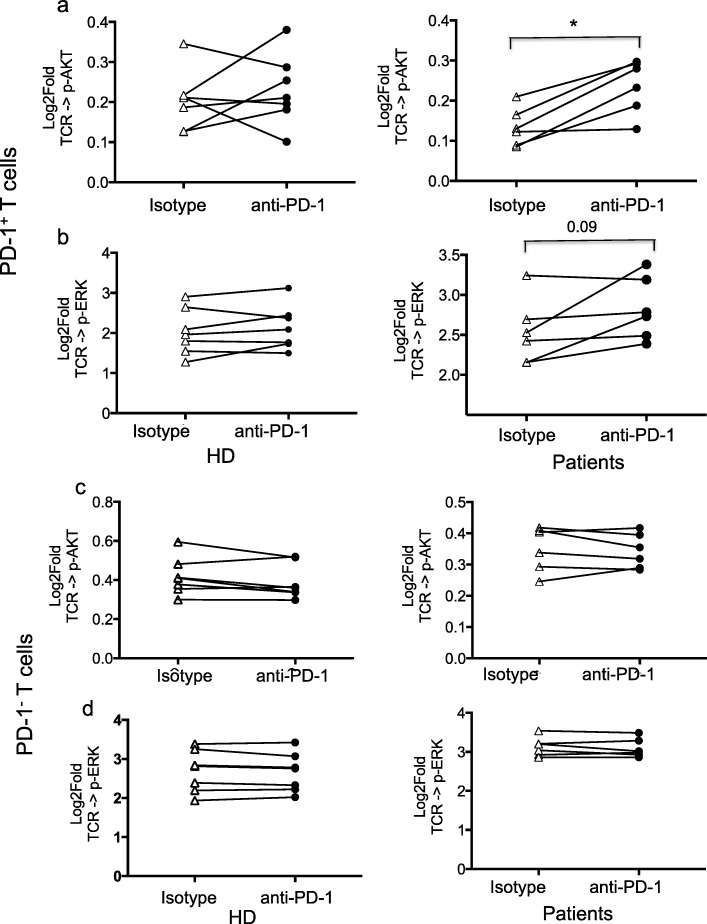Fig. 3.
Anti-PD-1 antibody restores TCR signaling in PD-1+ CD4 T cells from breast cancer patients. a-d PBMC from HD (Left panels) and patients (Right panels) were stimulated with anti-CD3 and anti-CD28 in the presence of anti-PD-1 antibody pembrolizumab (anti-PD-1) or isotype control antibody (Isotype). Graphs show the results for PD1+ T cells, as measured by phosphorylation of AKT (a) and ERK (b). Stimulation in the presence of anti-PD-1 did not significantly increase the response of PD1+ CD4 T cells from HD, but increased the response of PD-1+ CD4 T cells from patients, achieving significance as measured by AKT phosphorylation and showing a trend to significance, as measured by ERK phosphorylation. Stimulation in the presence of anti-PD-1 did not significantly increase the response of PD1− CD4 T cells from HD and patients as measured by phosphorylation of AKT (c) or ERK (d). Each line corresponds to one individual. T test, two-tailed, *p < 0.05, **P < 0.005

